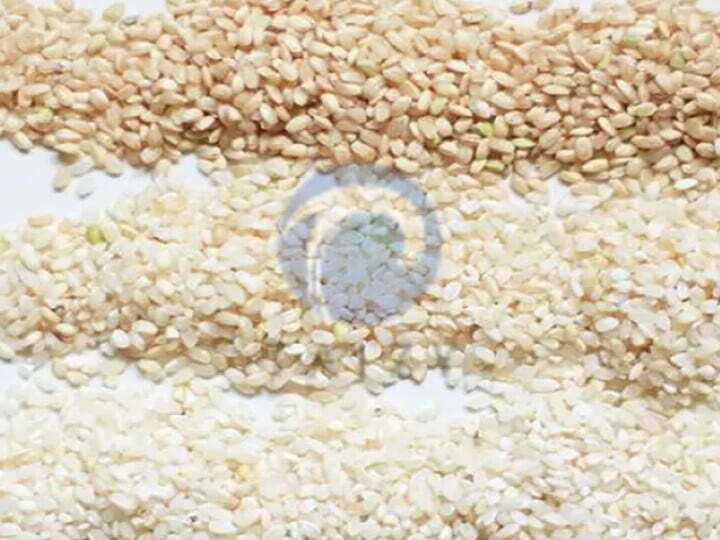Polishing is a step in the whole rice milling process. First, the brown rice is milled by multiple machines to remove broken rice and bran flakes. After spraying with water and moisturizing the rice (reduce the binding force of the endosperm and the rice bran, since little water is added, only a layer film is formed on the surface of the rice grain. Also, the short polishing time, it has no effect on the moisture content of the rice), and then enter the polishing machine, under certain pressure and temperature, the surface of the rice grains is polished by friction. The polishing treatment can not only remove the floating bran on the surface of the rice grains but also play the role of gelatinizing the surface of the rice grains. Starch gelatinization can make up for cracks, so as to obtain a crystal-clear appearance and improve the storage performance and practical quality of rice. Therefore, rice polishing is very necessary. But remember that the rice should not be over-polished because this wastes resources and loses nutrients.
From a nutritional point of view, the cortex and embryo of brown rice are rich in nutrients such as fat, cellulose, minerals, and vitamins. The rice husk is removed by the rice hulling machine to form brown rice. The structure of brown rice is composed of embryo and pericarp, seed coat, aleurone layer, and endosperm. Rice contains 18%-20% rice husk, 1.2%-1.5% peel, and seed coat
, 4%-6% aleurone layer, 2%-3.5% embryo and 66%-70% endosperm.In addition to starch, more than 60% of the nutrients in rice are concentrated in the embryo and cortex. Therefore, many nutrients in rice, such as lysine, threonine, vitamins b1, b2, b5, b6, and other minerals and dietary fiber, are essential to the human body, and they have physiological activities and are easily absorbed after ingestion. If you eat excessively polished rice every day, it is easy to cause a deficiency of B vitamins, and you are prone to beriberi, neuritis, cheilitis, keratitis, constipation, and other diseases. Even a lack of nutrients such as potassium, iron, and calcium.

Analysis from the perspective of resources: Experts suggest to reduce the number of polishing times, just 1-2 polishing times. The reduction in polishing procedures increases the rice yield and reduces power consumption. According to the survey results of 10 rice polishing processing enterprises, the number of rice polishing machines in each enterprise ranges from 3 to 6, and the average loss amount in the polishing process is about 25 kilograms per ton based on 4 polishing machines. The loss of electricity resources is awful. The total power of the four rice polishing machines is 368.8 kilowatts, and the electricity consumption per ton of polished rice is 52.69 kilowatts.
When using the rice milling machine, you can buy a better quality combined rice milling unit. After removing stones, dehulling, sieving, and rice milling, you can get better brown rice, and then you can polish it 1-2 times.